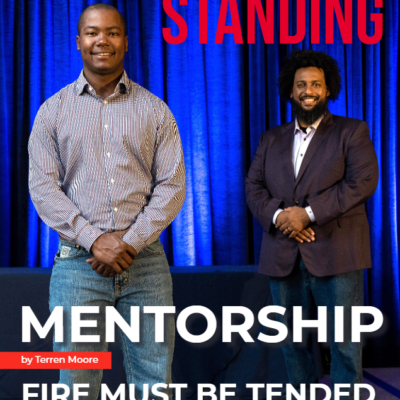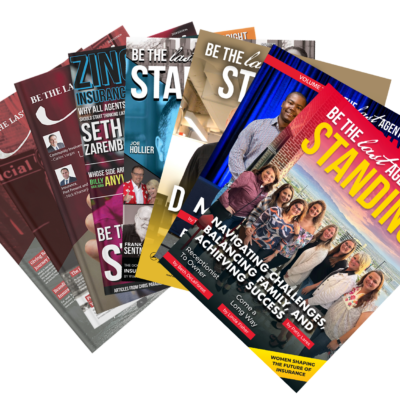When I think back to being in grammar school, I think about my wardrobe and how my mother had it fully automated for me. I had certain shirts for Monday, certain pants for Tuesday, and so on. I have to say it was quite the system. Automation plays a large role in my agency just as automation plays a large role in our lives. Recently, I’ve been reading an awful lot about agencies having a hard time with their automation strategy when it comes to their marketing. Automation is a way for us agency owners to work smarter, because it is a way to save us time and money if done properly. So my first question to you is: Is your agency using automation forth-social media marketing? If not, have you thought about the automation route? There are huge efficiencies to unlock in the automation world. At the same time however, there remains one very big question: how do you automate your social media presence and stay in the conversation with your audience?
Let’s back up before we move forward. Social media marketing should not begin and end with automation. I will say it again; social media marketing should not begin and end with automation. I would like to relate automation to the people who were making sales pitches inside of BJ’s Club. There are always people during the holiday season making sales pitches for convention ovens, they talk to you with extreme enthusiasm, and talk about throwing all kinds of herbs and juices over their chicken and/or turkey and throwing it inside the oven and allowing the oven to rotate. After all of that, you get home, set the timer, and forget the rest. This strategy would represent a poor model for an agency’s digital marketing strategy. It shows a typical “said it and forget it” situation. Now I’d like to compare automation to baking holiday cookies. After you mix the ingredients for the batter, you then place them on a cookie pan and put them in the oven. We must not forget though, we have to continue to look at the cookies to make sure we take them out at the right time, and then after we take them out we need to add sprinkles/any other toppings. Automation for your agency is just like baking cookies; you need to remain engaged with the process. If you take the model of setting it and forgetting it, your cookies most likely will not be any good. Your social media automation strategy needs to have you engaged from the very beginning to the very end. The goal of automation is not to remove all work entirely; rather it serves to help you and your agency work more efficiently. Social media automation can take your daily work of several hours and reduce it down to 30 to 45 minutes. Without having the proper social media automation, it is going to be very hard for your agency to have an online marketing strategy that will be profitable.
With all this being said, the simple system for automation of your agency’s social media goes hand-in-hand with your agency’s brand identity. Once you realize that your automation in your conversations go hand-in-hand with your brand identity, you can truly work to build an efficient productive and effective process. I would like to review for steps for your agency to have a well run rounded social media automation plan.
Step one— your agency needs to understand when to automate and when to engage in the world of social.
Step two— choosing the right tools for your automation within your agency is very important.
Step three—your agency needs to find an ideal automation schedule.
Step four— your agency must find ways to stay tuned in with the conversations in your social world.
Let’s first go over STEP 1. Your agency needs to understand when to automate and when to engage, because what we usually find out is automation can be quite addicting. Once your strategy has unlocked the efficiencies in a particular social area, it is tempting to keep going until you have mastered your entire workflow for that area. With that being said, we need to resist that temptation and hold back because not all social postings are meant to be automated. You will see even the big brands struggle with understanding when and how to walk the line of engagement through automation. Many insurance agents remember when Progressive had their automation fail because they were trying to engage the company on a controversial topic (http://money.cnn.com/2012/08/14/technology/progressive-tweets/). This article will show you how, by not having a good handle on your automation, how much aggravation it can cause your agency. The lesson learned here was, it is very important in knowing and understanding the difference between when you automate and when you engage. Start with automation and curating your agency’s content. Finding and sharing great content online is a great way for your agency to build a brand and an audience in the world of social. Automation will help your agency in a way in which it will provide a means of posting on specific days at specific times. You will have to do your research to find out when your audience is around or not; you wouldn’t perform on an empty stage if you wanted to be heard, right? This also allows you to free up time because automation is a big timesaver. A question I often get is what’s a good rule to follow when content sharing? Unfortunately, there is no golden ratio, but if you’re in the mood and your agency wants to experiment, I have found that the 5-3-2 rule has worked pretty well. The 5 stands for the amount of content that you will take from others, and share to your relevant audience. Realize that relevant audience is the key component to your success; you wouldn’t start talking to a bunch of vegans about where to buy the best meats, would you? The 3 stands for the content that should come from you and/or your agency which too needs to be relevant to your audience. Keep in mind; it should not be a sales pitch. The number 2 stands for personal and non-work related content that hopefully helps you in your agency become humanized in the world of social. Although this content may not relate to work directly, it should be centered around your agency’s brand identity.
Your agency’s automation should be non-urgent social posts. Beyond curating your agency’s content, many social media users find themselves sharing and/or re-tweeting thoughts throughout their social network of choices. When you look back to the rule of five – three – two your non-urgent social posts are the rule of two. You still need to realize and provide these posts to the right audience with the right visual content at the appropriate times. It is very common not only for insurance agencies, but many small businesses and large businesses to automate their RSS feed. For example, bloggers generally want to share their latest blogs and/or posts in the social world; this is where automation is a very helpful tool. You can automate your agencies newest blogs and allow them to be transmitted directly into the social media channels that your agency chooses by automating your RSS feed. The only catch here is you’ll want to check the formatting of every blog post before you set this process in motion. You must be aware and stay in touch with feedback to your targeted audience, because blind blasting of your RSS content can scream automation, which can be a major turnoff to your audience in the world of social. So keep in mind, you must still pay attention to your audience. If they are speaking and commenting back to you, you must stay engaged, because nobody likes to be ignored. When you ignore someone in the social world, you not only ignored that specific person, but the audience that’s watching sees that lack of response and it comes off as being rude and unacceptable.
A big no-no in automation is automating customer interaction. As in the case of Progressive that I discussed earlier in this article, automating customer interactions can lead to some really bad experiences to your agency. Many busy larger companies might try and attempt to automate simple responses, like thanks, but anything more than that is a very dangerous game and especially dangerous for a smaller agency. Customers very much appreciate unique an individual responses in the social world, many people love social media as much as they do because of the interaction aspect of it. Therefore, it is very important that your agency does not take the realness out of social media; your audience should feel as though a human, not a robot, is engaging with them. Automation to your prospects and/or customers interactions may never lead to bad press like what happened in the example of Progressive, but it can have very damaging effects on the reputation of your agency if you are not engaging properly. Prospects and or customers can tell when they are dealing with and assembly line instead of an actual human.
Another big no-no is automating troubleshooting. This is a very similar situation to what I just discussed. Troubleshooting should be left to real people dealing with real situations and having real interactions. There may be opportunities to streamline some agency communication if there is a common problem that can be fixed with a very simple answer, but even then it is best to always run it by a real person first. Considering the time and energy involved in troubleshooting you might as well just have a real person interacting with the issue to begin with. You don’t want your clients and/or perspectives inconvenienced by an issue or problem, just as you wouldn’t want to be inconvenienced with one as a client or prospect. The easy answer to this is anytime there is an issue, leave automation out of it.
STEP 2 is choosing the right tool for your agency. The automation tool we use at Paradiso insurance is Buffer, but your agency can Google “social media automation tools” and you’ll see there’ll be hundreds of options for you in your agency to choose from. When choosing an automation tool for your agency, be sure to choose the tool that is easy for you and your agency to use with the least amount of learning curve.
STEP 3 is where your agency needs to find in ideal automation schedule. Like I mentioned in step two, we use Buffer, which allows you to throw all of your great finds within the social world into a queue and space out your agency posts accordingly throughout the week. By default, Buffer spaces your posts out throughout the day and throughout the week. In the instance that you and your agency would like to get ultra-specific on the day and time of your post, keep in mind three very valuable questions. First, you need to ask yourself and your agency when you are around to respond to interactions that may come from your agency content. You also need to ask, when do our posts most often get clicked? The last question you should ask your agency is, what time zones are the majority of customers and or your social audience in? Those three questions are key to your agencies success when it comes to finding an ideal automation schedule. Furthermore, I would like to share that here at Paradiso Insurance we use Followerwonk, Tweriod and or SocialBro to track and analyze such behaviors of our audience so we can align with their schedules and post at the best times.
Stay tuned for STEP 4 and create a system for staying in the conversation. The ability to stay in the conversation will be very beneficial for any system. A very good system that we use is called Mention. This app allows you to track your agency’s website, names of your agents, your agency across several social media channels. Like Google, you can be updated via e-mail when you or your agency receives a mention in the social world. This will allow you and your agency to stay on top of things and will assure that your audience is not being ignored. Another key is being sure to turn on notifications so you and your agency are aware of opportunities. Twitter, Facebook and others platforms have the capabilities to notify you virtually anytime anything happens to your account. I have found in many cases this is the first thing many agents turn off, I would NOT recommend that. You should opt in and look at every email that comes in from social media channels because it’s what is going to allow you to understand and respond to a situation. Also, be sure your agency sets aside time to engage. Engagement is key, and social media conversations are great for new business opportunities. Great conversations can even help you and your agency with the renewal process, its relationship building!
Although many great things can happen when automating, agencies must not forget to avoid the pitfalls of automation. How? First, customize your message for different social networks. Why? Well some social sites are B2B, which is business to business while other sites are B2C (business to consumer) and they are two totally different worlds that you do NOT want to mix up. The second is, do NOT schedule too far out. You must be careful not to end up pushing out untimely content. Third is stay up to date with current events. If your agency can follow these rules and avoid the pitfalls of automation, you will have a positive and successful outcome using automation as a social media marketing strategy.






Great article. Thanks for sharing. I wanted to see if you are okay if I repost this. I have my own agency but I also run an insurance trade association in Ca. I would like to post on my own FB page but I would also like to place this as a story in my monthly magazine for BIG Independent Group.. Please let me know if you would be okay with it.
Hi Chris, great post! I agree that we shouldn’t automate everything in social media. It really bugs me when I see someone just post automated links to their blog, and never responds to tweets or replies. Not a good way to build influence or engagement.
I saw you mention Followerwonk… was wondering if I could pick your brain, and get your feedback on a free marketing tool I developed called BuzzSumo (at buzzsumo dot com)
It shows you the most shared articles for any topic or competitor, and shows what types of headlines gets the most shares. So for instance, you can see which articles related to “content marketing” or “Game of Thrones” got liked/tweeted the most in the past year or month.
Would you find value in this tool?